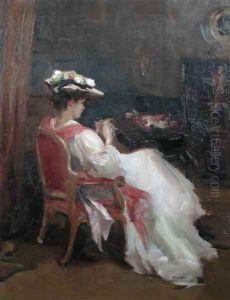Julie H. Heynemann Paintings
Julie H. Heynemann was a French artist whose work spanned the late 19th and early 20th centuries. Born in 1858, she was not only a painter but also a printmaker, known for her etchings and lithographs. Heynemann's work is less well-known than some of her contemporaries, and as such, detailed biographical information about her can be somewhat limited.
Heynemann's artistic style was influenced by the movements of her time, including Impressionism and Post-Impressionism. She was a part of a generation of women artists who were beginning to gain recognition and opportunities within the art world, though they still faced significant barriers due to their gender. Her works often depicted landscapes, still lifes, and genre scenes, showcasing her keen observation and ability to capture the interplay of light and color.
Although not as prominent as some of her peers, Julie H. Heynemann was a part of the vibrant Parisian art scene. She exhibited her work in various salons and galleries, contributing to the cultural tapestry of the era. Her contributions to art, particularly in the realm of printmaking, added to the diverse artistic expressions of the time, although much of her life's details, including her training and personal life, remain obscure.
Julie H. Heynemann continued to create art until her later years. She passed away in 1947, having witnessed profound changes in the world and in the art world. While her name may not be as celebrated as some of her contemporaries, her works remain a testament to the talents and perspectives of women artists during a time of great change in the art world.
